Mexico Travel Statistics from 2019 to Now

Updated On: April 20, 2024 by Salma Ihab
Mexico, a land of vibrant culture, stunning landscapes, and rich history, consistently ranks among the top travel destinations globally. But what exactly draws millions of tourists to its shores year after year?
Let’s delve into some compelling Mexico travel statistics that illuminate the country’s magic, drawing upon reliable sources to paint a comprehensive picture.
Table of Contents
A Glimpse into Mexico’s Past
Mexico has an incredibly long and rich history. It was once home to some of the most advanced ancient civilisations the world has ever seen. Evidence of the earliest human inhabitants in this country dates back around 9.000 years BC.
For a few thousand years, humans existed in somewhat nomadic hunter-gatherer societies until around 2000 years BC when agricultural villages started to develop. Those villages grew in several parts of Mexico, and eventually, the first major civilisation, the Olmecs, was born around 1200 BC.
Olmecs (1200-400 BCE)
The Olmecs are known for their incredible stone carvings and complex political and trade systems. However, by the year 400 BC, they were gone, and no one knows why. Even though the Olmecs disappeared, they paved the way for other Mesoamerican civilisations. One of the greatest was the Mayan civilisation, which flourished between 250 and 900 AD and controlled an area roughly the size of Texas.
Maya Civilisation (2000 BCE-900 CE)
They were so advanced that they were one of the first civilisations to understand the concept of zero. By studying the planets and their movements, they created a complex and accurate calendar. They built some of the largest pyramids in the world, had a writing system, and even invented chocolate.
It is believed that the combination of overpopulation, overuse of land, constant wars, and prolonged drought caused the decline of the Maya. However, descendants of the once great civilisation still live in Mexico and Central America to this day.
Aztecs (1300-1521 CE)
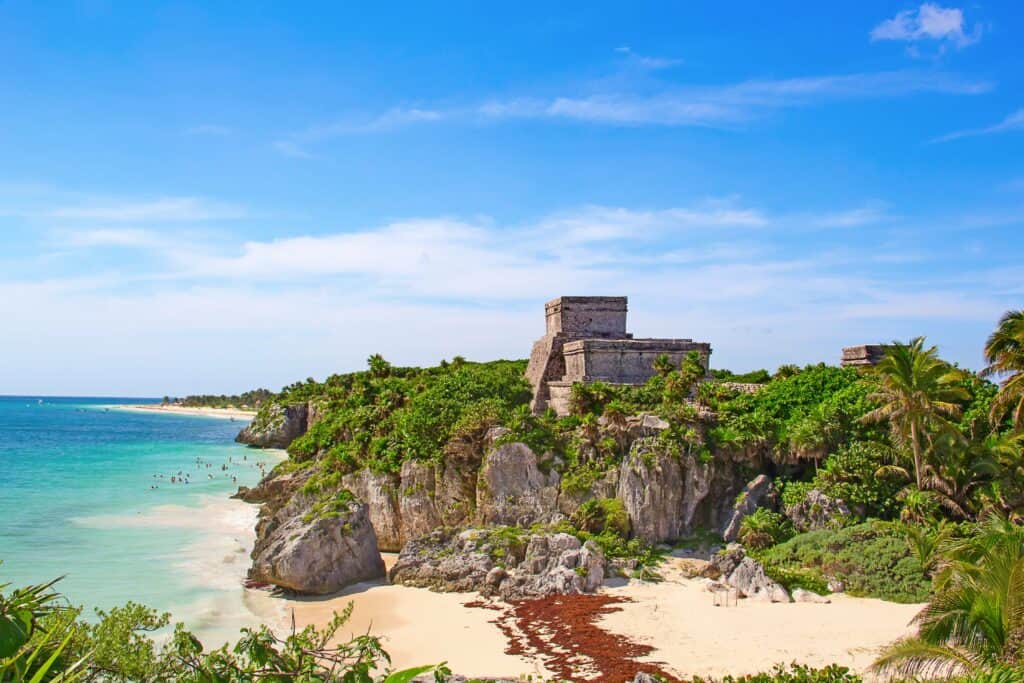
Just like the Olmecs before them, the Mayans paved the way for future civilisations, like the well-known Aztecs, who had their golden age between 1345 and 1521. They ruled over land from the Gulf to the Pacific. At the height of their power, they had a population of 5 million people which was two million more than all of England at that time.
Spanish Conquest and Colonial Period (1521-1808 CE)
The Spanish first arrived in Veracruz in 1519, led by Hernán Cortés. The Aztec emperor Montezuma first thought Cortés was a god and showed him great respect, but this proved to be a huge mistake.
Cortés was able to see first-hand how rich and powerful Montezuma and his empire were, and he wanted that for himself. So, he took advantage of the emperor’s kindness and allied with his enemies. In August 1521, Cortés and his army seized the Aztec capital, called Tenochtitlan. Thus, he conquered the Aztecs.
Then, they began colonising the area, renaming it Nueva Espana. This was an incredibly bad time for the indigenous people because, over the next 80 years, the Spanish killed over 24 million people in Mesoamerica either through war or disease.
In Neuva Espana, the conquistadors expanded their rule, subjected the surviving indigenous people, introduced Catholicism, and set up a class system that placed people born in Spain at the top and indigenous people at the bottom. The two classes in the middle class were the Criollos, who were Spaniards born in Mexico, and the Mestizos, who were people with Spanish and Mexican parents.
Over the next two centuries, the Mestizos, and especially the Criollos, began to feel resentment toward those who were born in Spain because they were the only ones allowed any political power. They questioned the divine rights of the kings. After they helped the newly formed United States in their war for independence in 1776, the Spanish king Charles IV was dethroned by Napoleon in 1808.
Mexican War of Independence (1810-1821 CE)
Talks of Mexican independence spread far and wide and quickly gained popularity. The war was ultimately started by a Catholic priest called Miguel Hidalgo Y Costilla, who spent years secretly talking to people in this community, promoting the idea of revolution and uniting people of all social classes.
It was Hidalgo Y Costilla who declared war on Spain on the morning of September 16, 1810, after Costilla received word that someone had exposed his actions to the Spanish authorities.
The Mexican War of Independence went on for 11 long years, during which it was estimated that over half a million Mexicans were killed. The war ended when a rebel leader, Vincent Guerrero, and a defected Spanish royalist leader, Agustin De Iturbide, collaborated, negotiated, and drafted a constitution that made Mexico an independent constitutional monarchy.
First Mexican Empire and the Republic (1821 CE-Present)
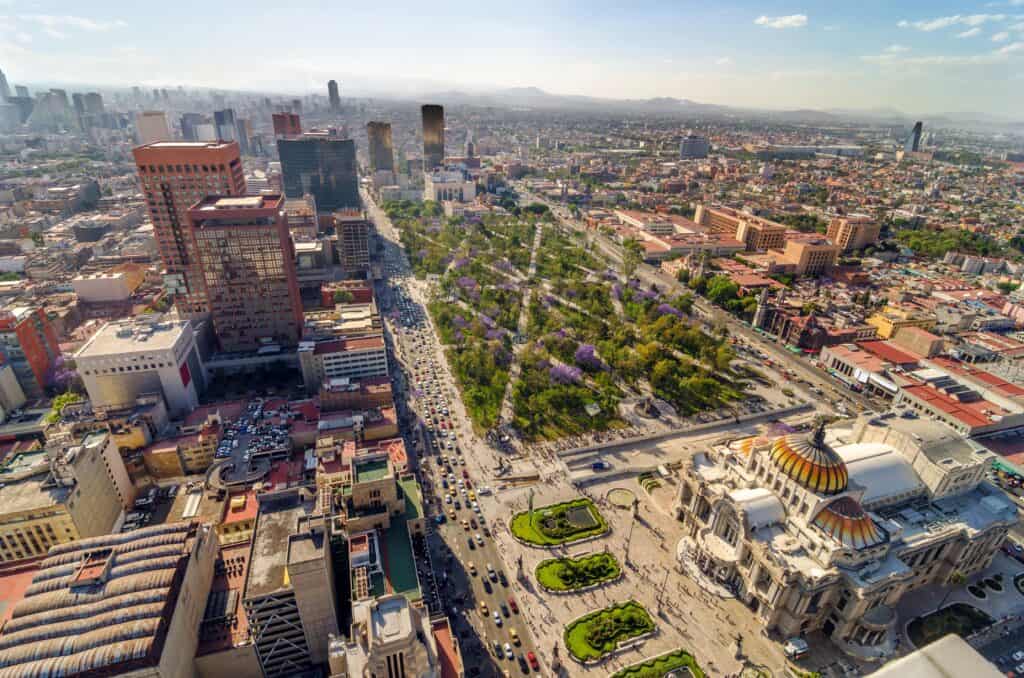
Even though Mexico had declared independence, some people still wanted the monarchy. So, Iturbide seized his chance and declared himself emperor. However, the Mexican people hated this step because it meant that nothing had changed for them. Those feelings resulted in him being overthrown by Antonio López De Santa Anna, who changed Mexico into a federal republic.
Then, Texas won independence from Mexico in 1836 and joined the United States a few years later. Then, in 1846, after Mexico rejected the US government’s requests to purchase a large chunk of their land, the US invaded it, sparking the Mexican-American War. Mexicans lost all their northern territories to the United States, including California, Arizona, and New Mexico.
Then, in 1861, the French occupied Mexico and turned it back into a monarchy, this time with an Australian emperor. Luckily, six years later, with the help of the United States, France was kicked out of Mexico, which was once again independent.
Just a few years later, Mexico came under the rule of dictator Porfirio Díaz. While the infrastructure and the industrial revolution bloomed with Díaz in charge, he rigged the elections, favoured the rich, and ignored the needs of the poor.
The Mexican Revolution (1910-1920 CE)
By 1910, the Mexican people were fed up with the great wealth inequality, which sparked the Mexican Revolution. The revolution lasted for 10 years and cost the lives of two million people. It ended yet with another new constitution that favoured organised labour and limited the presidents to a single term in office.
Unfortunately, even after all that fighting, not much was fixed for the labourers who needed the change the most. However, a few decades later, the Mexican economy got a big boost when it joined the fight in World War II. It gave them the money and resources they needed to build better roads, irrigation systems, and factories.
Political Stability
For the first time in their independence history, they had political stability and peaceful changes of powers. They allowed foreign investment, became major natural gas producers, and greatly expanded their highways, railroads, and airline networks, which did wonders for their economy.
Unfortunately, by the 1980s, drug cartels had a major growth as there was a high demand coming from the United States. The growth of the cartels resulted in a lot of violence in the country. While the fight against the cartels is still ongoing, they have had less and less influence in the country in recent years.
Mexico has become one of the most significant countries in all of the Americas for their plentiful natural resources, industrial output, and booming tourism industry.
Mexico Tourism Statistics
Beyond its famous beaches and ancient ruins, Mexico offers a diverse tapestry of experiences, attracting a number of tourists for leisure, business, and exploration alike. The highest number of worldwide tourists was observed in 2017 (99.3 million), while the minimum number was in 2020 (51.1 million). Let’s delve into some illuminating statistics that shed light on the dynamic travel landscape of this enchanting country from 2019 to the current day.
Mexico Travel Statistics 2019

Mexico’s vibrant culture, stunning landscapes, and rich history have consistently positioned it as a top travel destination. Let’s delve into some compelling statistics from 2019, showcasing the pre-pandemic tourism boom:
International Arrivals
A record-breaking 97.4 million inbound tourists paid a visit to Mexico in 2019, with around 909 thousand more tourists compared to 2018. This figure solidifies the country’s position as the 7th most visited country globally.
Dominant US Market
Approximately 10.5 million inbound tourists travelled from the United States, highlighting strong travel ties between the US and Mexico. It is followed by 2.3 million tourists from Canada.
Moderate Spending per Tourist
In 2019, an international tourist spent an average of approximately $488 USD. Total international tourism receipts for this year were $25.8 billion USD, increasing by 8.59% compared to 2018, which was $23,8 billion USD. This figure accounted for 17.9% of total travel expenditure in 2019.
Tourism Industry Powerhouse
Travel and tourism in Mexico generated substantial revenue, amounting to nearly $24.6 billion USD, contributing to approximately 8.7% of the country’s Gross Domestic Product (GDP). This economic boost had a positive impact on various sectors within Mexico, like hospitality, transportation, and retail.
Thriving Domestic Travel
Domestic travel within Mexico also thrived, with approximately 264 million domestic tourism trips recorded. Mexicans were excited about touring Mexico, their own country, discovering hidden gems and rediscovering iconic landmarks.
Cancun: The Top Destination
The most popular destination in Mexico is Cancun. In 2019, it received around 6.15 million tourists from around the world.
Robust Tourist Infrastructure
This country had an extensive tourism infrastructure, with over 22,000 restaurants in 2019.
Thriving Hospitality
Nights in hotels and similar establishments increased from 166.7 million visitors in 2018 to 174.6 million in 2019. The Mexican Caribbean (Quintana Roo) offered 44 thousands rooms, the country’s largest hotel offering.
The above data has been obtained from Gitnux Marketdata Report, Statista, OECD iLibrary, and MacroTrends.
Mexico Travel Statistics 2020

The year 2020 presented unprecedented challenges for the global tourism industry, and Mexico was no exception. The COVID-19 pandemic disrupted travel patterns in world tourism, leading to significant declines in visitor arrivals and spending. However, since Mexico maintained loose travel restrictions during the pandemic, its tourism sector demonstrated resilience, adapting and highlighting its ongoing importance to the national economy amidst the difficulties.
COVID-19 Impact
Mexico received 51.1 million inbound visitors in 2020 due to the impact of the COVID-19 pandemic on global travel. The decrease can be attributed to travel restrictions, health concerns, and lockdown measures implemented worldwide.
Sharp Drop in Arrivals Between January and August
Between January and August 2020, Mexico witnessed a dramatic drop in inbound visitors. The country received 35.5 million visitors, reflecting a 44.9% decrease compared to the same period in the previous year when 64.4 million inbound visitors arrived in Mexico.
Shifting Source Markets
US travel remained a significant source of tourism revenue despite the decline in 2020. Approximately 11.7 million tourists from the United States visited Mexico, followed by 1.5 million tourists from Canada.
Economic Contribution
Despite the decline in arrivals, tourism contributed significantly to the economy. Total travel spending in Mexico for 2020 amounted to $11.4 billion USD (2.58% of exports), declining by 55.7% compared to 2019.
Sector Resilience
The sector remained resilient, contributing 6.3% to the country’s GDP in 2020. This economic impact highlights the sector’s importance even during challenging times.
International Overnight Visitors Down
There was a 46.1% decline in international overnight visitors (down to 24.3 million). This reflects a shift in travel behaviour with fewer extended stays.
Domestic Travel Decline
Domestic tourists staying for a night declined from 101.7 million visitors in 2019 to 48.0 million in 2020. The number of nights spent in hotels and similar accommodations declined by 52.4% to reach 83.1 million.
International Tourist Arrivals by Air Between January and August
International tourist arrivals by air in 2020 likely experienced a dramatic drop compared to 2019, with figures possibly around 3.1 million. This figure represented a dramatic drop of 58.7% compared to the same period in 2019. The period between January and August 2019 witnessed 7.4 million tourists.
The above data was obtained from the OECD iLibrary and the Mexican Tourism Board (SECTUR)
Mexico Travel Statistics 2021
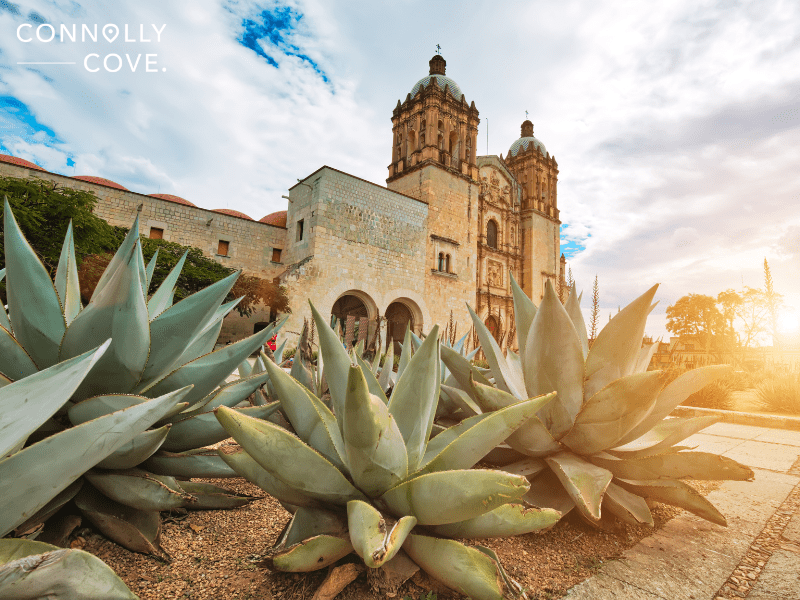
While 2020 brought significant challenges to the global industry of tourism, Mexico’s tourism started showing signs of recovery in 2021. Here’s a breakdown of key statistics highlighting this positive trend:
Increased International Arrivals
Although not reaching pre-pandemic levels, Mexico welcomed a notable increase in international visitors compared to 2020. The Mexican Tourism Board (SECTUR) states that the country welcomed over 55.3 million inbound tourists throughout this year, reflecting a rise from 51.1 million in the previous year.
International Tourist Arrivals From January to August 2021
The number of inbound tourists arriving in Mexico from January to August 2021 significantly decreased from 35.5 million to 20.1 million compared to the same period in 2020.
Worldwide Visitors to Mexico
December had the highest international tourist arrival in 2021; Mexico welcomed around 3.7 million inbound tourists this month. On the other hand, the country received 1.6 million inbound tourists in February, which was the lowest month in 2021.
Overnight Visitors
Approximately 31.9 million inbound tourists were overnight visitors, while 23.4 million were excursionists.
Shifting Source Markets
Mexico received around 10.2 million American tourists, followed by Canada, with 504 thousand tourists. Spain came in third place, with 221 thousand tourists.
International Tourist Arrivals by Air
Between January and August 2021, Mexico saw a surge in US tourists arriving by air, with numbers exceeding 6.4 million, reflecting a significant increase compared to the pandemic year of 2020.
The number of UK tourists who arrived by air in Mexico between January and August 2021 represented 1% of all arrivals. The same as the UK, Canada also represented 1% of all arrivals in Mexico by air. Brazil, as well as Colombia, represented 2% of all arrivals.
Main Airports of Arrivals
Between January and August 2021, Cancun, Mexico City, and Los Cabos were the airports that received the highest number of international arrivals, respectively. The number of arrivals in Cancun was 3.9 million, a great increase of 77.8% compared to the same period in 2020. Mexico City also witnessed a significant increase of 27.1% compared to the same period in 2020. There were 1.5 million arrivals at Mexico Airport.
Los Cabos also had a huge increase in the number of arrivals observed at 1.1 million compared to the same period in 2020, witnessing a 97.2% increase. Due to COVID-19, international airport arrivals in Mexico decreased by 45.2% in 2020.
Average Tourist Spending
In 2021, leisure tourism dominated spending in the country’s travel industry, accounting for 95% of the total. In 2020, the average international tourist spent roughly $215 USD on their trip.
GDP Contribution
While the most recent data suggests a contribution of around 7.1% of GDP in 2021, corresponding to an amount likely lower than $1.3 billion USD, the importance of tourism to the economy of the country remains undeniable.
The above data has been obtained from Statista, the Bank of Mexico, SECTUR, and the OECD iLibrary.
Mexico Travel Statistics 2022
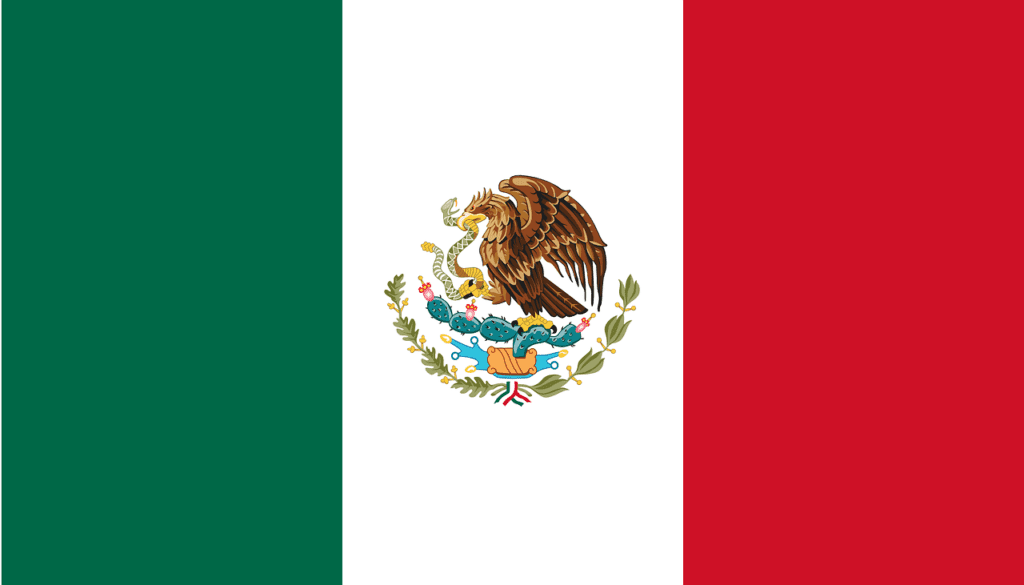
Mexico’s industry of tourism continued its positive trajectory in 2022, reflecting a strong rebound from the pandemic’s impact. Here’s a breakdown of key statistics highlighting this growth:
Surge in International Arrivals
SECTUR reported a 19.3% rise in international arrivals in 2022 compared to 2021. The numbers suggest that there were over 66 million international visitors throughout 2022, exceeding figures from 2021 by nearly 11 million.
Air Travel
Air travel played a major role in this increase. Data suggests that over 20.6 million international visitors arrived by air in 2022, 46.3% higher than in 2021.
Top Tourist Destination
The top destination for many overnight visitors in the Latin American country was the Riviera Maya on the Caribbean coast of Mexico. It reported roughly 35 million occupied rooms. The Riviera Maya was followed by the Mexican capital, Mexico City, which reported more than 27.5 million occupied rooms.
Top Arrivals
The United States remained the leading source market for Mexican tourism, with over 13 million US citizens visiting the country (63% of total visitors). Canada was followed by 1.8 million inbound visitors (8%).
Main Airports of Arrivals
Cancún International Airport reached the peak figure of 9.5 million international visitors, followed by Mexico City International Airport with 4.2 million passengers. Between January and November, around 8.6 million inbound tourists travelled to Mexico through Cancún Airport and around 3.8 million through Mexico City Airport.
Hotel Occupancy
Tourist destinations in Mexico saw a significant boost in hotel occupancy in 2022. The average rate in a grouping of 70 tourist centres rose by 15.5%, reaching 56.7%.
Departures of Outbound Tourists from Mexico
Mexico saw a significant surge in outbound tourists in 2022. According to INEGI, over 12.98 million travellers departed from this country between January and November, reflecting a jump of 2.66 million (25.8%) compared to the same period in 2021.
Tourism Contribution to GDP
Tourism remains a significant component of the Mexican economy, contributing $1.47 billion USD. This directly accounts for 8.5% of the national GDP.
Tourism Employment
The sector employed approximately 4.7 million people during the year, sustaining livelihoods and contributing to the nation’s prosperity.
Border Tourism
Mexico welcomed 12.9 million international border tourists, 10.6 million of whom were automobile drivers, and the rest (2.3 million) were pedestrians.
The above data has been obtained from Statista, the National Institute of Statistics and Geography (INEGI), the Bank of Mexico, the OECD iLibrary, Secretaria de Turismo (Ministry of Tourism, Mexico), and the SECTUR.
Mexico Travel Statistics 2023 and Forecasting 2024
Despite the challenges posed by the global pandemic, the industry of tourism in Mexico demonstrated remarkable resilience in 2023. While data for the entirety of this year might still be limited, here’s a breakdown of what we know so far about the tourism in Mexico statistics in 2023, incorporating insights from reliable sources:
International Tourist Arrivals
International tourism arrivals in Mexico were on the rise! Over 16.49 million international tourists arrived between January and May, reflecting a jump of 1.8 million (12.8%) compared to the same period in 2022.
International Tourist Arrivals to Hotels
Despite the severe impact of the COVID-19 pandemic on international travel, Mexico City’s hospitality sector is showing strong signs of recovery. In the first half of 2023, hotels hosted over two million foreign visitors, representing nearly two-thirds of the total figures for 2022. This significant growth indicates a promising trajectory for the city’s tourism sector.
Forecasting 2024
Analysts project a bright future for the tourism industry in Mexico. By 2024, revenue is expected to reach US$16.13 billion. Furthermore, the market is anticipated to experience a steady annual growth rate of 4.49% between 2024 and 2028, with a projected market volume of US$19.23 billion by 2028.
The above data has been obtained from Statista, Secretaria de Turismo, and the INEGI.
Top 10 Tourist Attractions in Mexico
Gorgeous shores, delicious culinary scenes, festive culture, and ancient pyramids all make Mexico a preferred destination for the majority of tourists. This country could be a land of colour and contrasts. Crowded beaches headed to quiet colonial towns, while resort cities open gateways to jungles buzzing with parrots and howler monkeys.
Majestic mountains descend to remote deserts. Traditional Pueblo houses sit near Spanish haciendas. Ruins in Mayan cities lie excavated outside of contemporary metropolises. Let’s have a glance at the simplest places to go to in Mexico:
1. Chichén Itzá
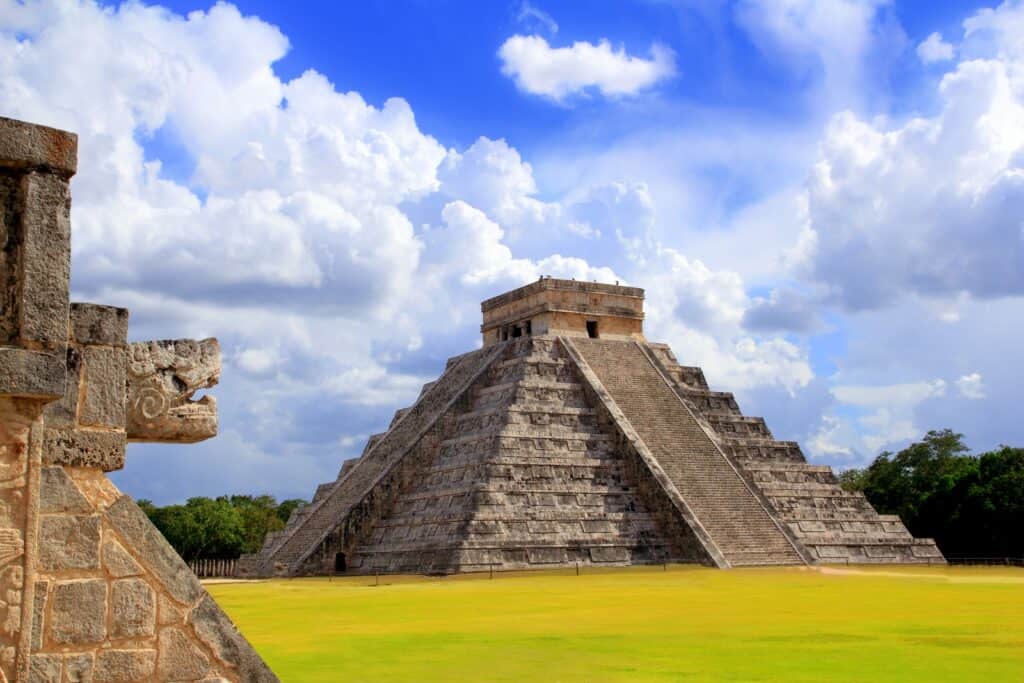
One of the foremost famous archaeological sites on earth, Chichén Itzá was once a thriving city in the Yucatan. It is now one of the UNESCO World Heritage Sites. Built by the Mayans in 600 AD, it was abandoned in 1221 when Mayapan became the region’s new capital.
Highlights include the Temple of Kukulcan, a large stone pyramid with four stairways representing a compass and 365 steps for every day of the year. It’s best visited during the spring or autumnal equinox when the sun creates a lightweight show on the steps of the pyramid.
Other must-see sites include the Ball Court, the Wall of Skulls, and the Sacred Cenote, which was once a site of human sacrifice.
2. Tulum
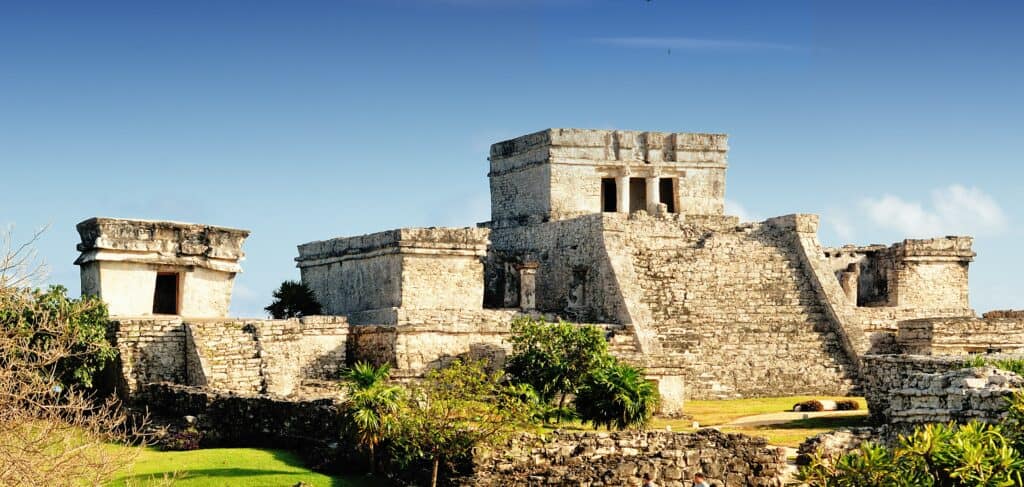
An hour’s drive from Cancun, the Tulum ruins are the remains of an ancient clifftop fortress built by the Mayans. Walled on three sides, with the fourth receptive to the Caribbean, the views are simply incredible. While it dates back to 564 AD, it was at its prime during the 13th and 14th centuries. It was a strong trading hub for jade, cotton, and cacao beans.
The El Castillo Pyramid is the most attractive. Have a glance at the attractive mural inside the temple of the Frescoes and opt for a swim at Tulum’s secret beach, surrounded by palm trees and sunbathing iguanas.
3. Teotihuacan
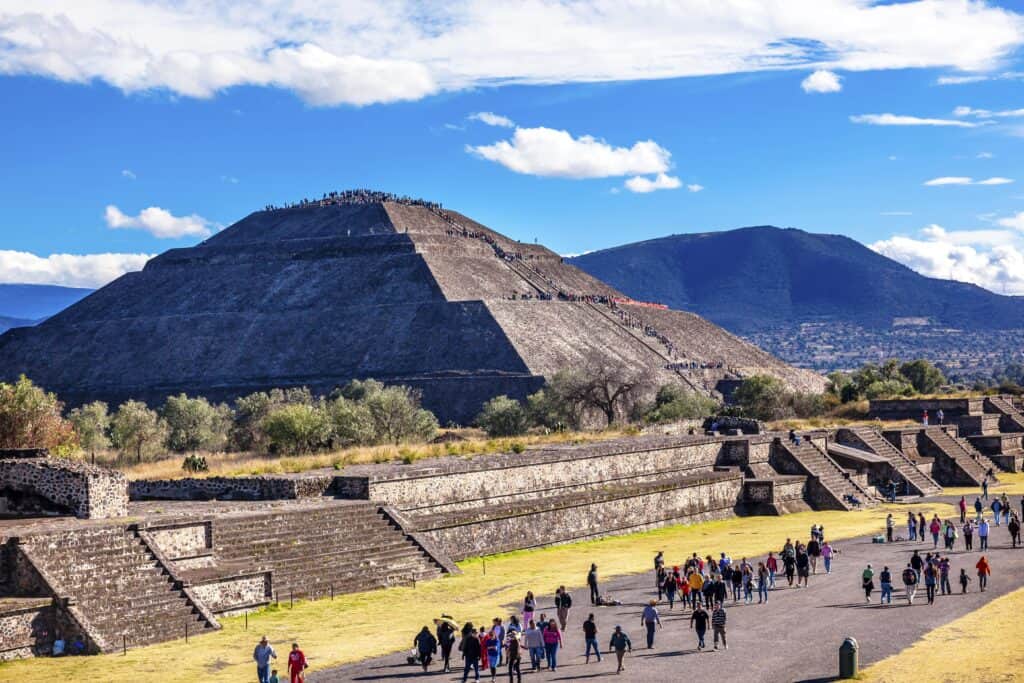
Located on the outskirts of modern-day Ciudad de Mexico, Teotihuacan is one of the foremost famous Aztec archaeological sites. The Aztecs didn’t build it, and despite many theories, nobody is certain who did it. However, the Aztecs did name it and make it their own once they stumbled across the abandoned city.
In its prime, it was the biggest city in the hemisphere and residential to many residential compounds and pyramids. Today, its two iconic pyramids, the Temple of the Sun and the Temple of the Moon, are the key highlights. Stroll along the Avenue of the Dead and visit the Citadel and, therefore, the Temple of the Feathered Serpent.
4. Puerto Vallarta
Situated on the Bay of Banderas along the Pacific Coast is the popular vacation city of Puerto Vallarta. Landscapes of gorgeous beaches and luxurious jungle mountains envelope this picturesque town of colonial landmarks, first-class resorts, and gourmet restaurants.
The city’s main attractions, the golden sand beaches, offer relaxation and water sports, like sailing, kite surfing, and deep-sea fishing. You can view giant manta rays and dolphins occasionally; however, you can regularly see humpback whales between December and March.
5. Mexico City
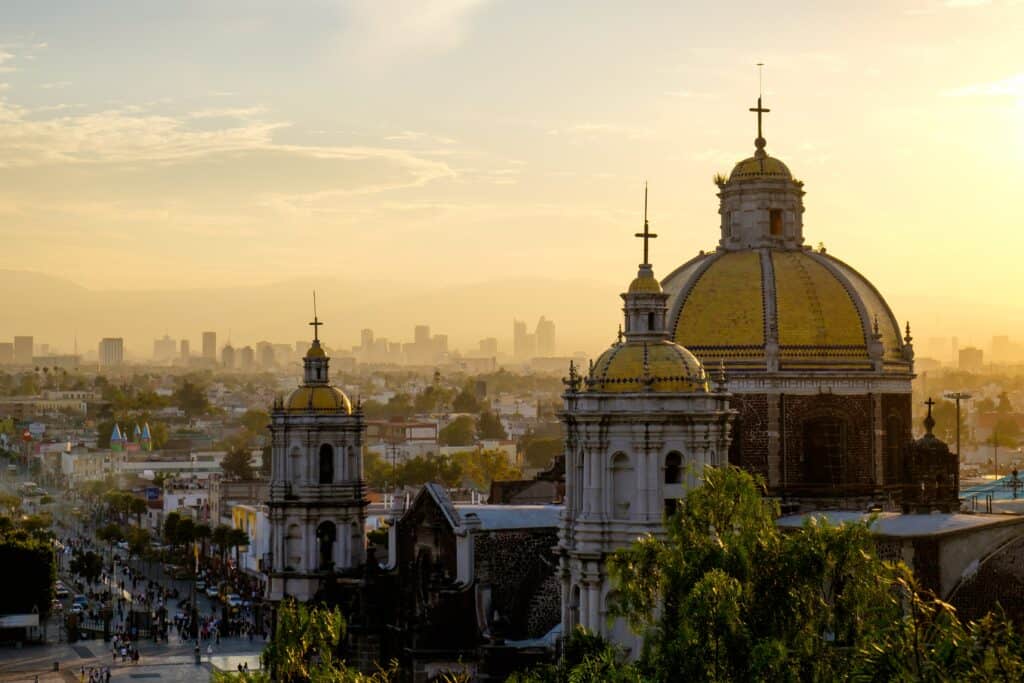
One of the most visited cities in the globe is Ciudad de Mexico, the sprawling capital of Mexico. This amazing metropolis is jammed full of history, scintillating culture, and amazing art. Originally an Aztec settlement, as evidenced by the ruins of the 13th century Templo Mayor, there are plenty of buildings that point back to its Spanish colonial past because of the capital of recent Spain.
Baroque churches and bright palaces lie among cobblestoned old lanes. The town encompasses a protracted relationship with art and has been home to famous intellectuals and artists throughout the years, including Mexican icons Frida Kahlo and muralists.
6. Oaxaca
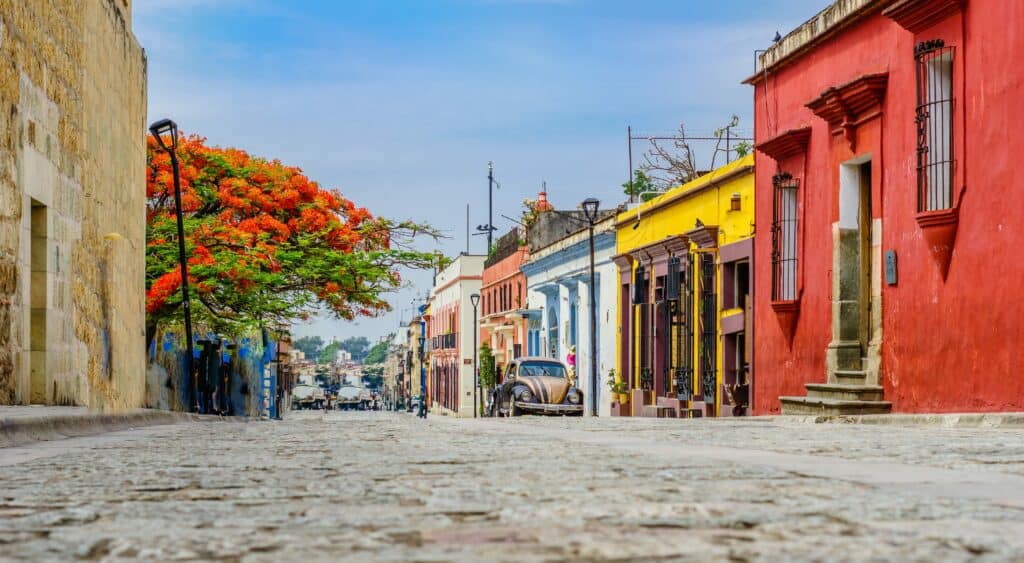
The capital city of the state, Oaxaca, is found in a valley below the Sierra Madre mountains. Colonial architecture, archaeological sites, and a tranquil atmosphere make it one of the most visited destinations in Mexico.
In the middle of Oaxaca is its charming town square, where many tourists can admire beautiful colonial landmarks, like the city Church, tour museums, and relax at an outdoor cafe.
You can explore several archaeological sites around the city, like Monte Alban. Perched on a mountain, Monte Alban was the standard capital city of the Zapotec inhabitants. It offers impressive views of the valley below.
7. Guanajuato
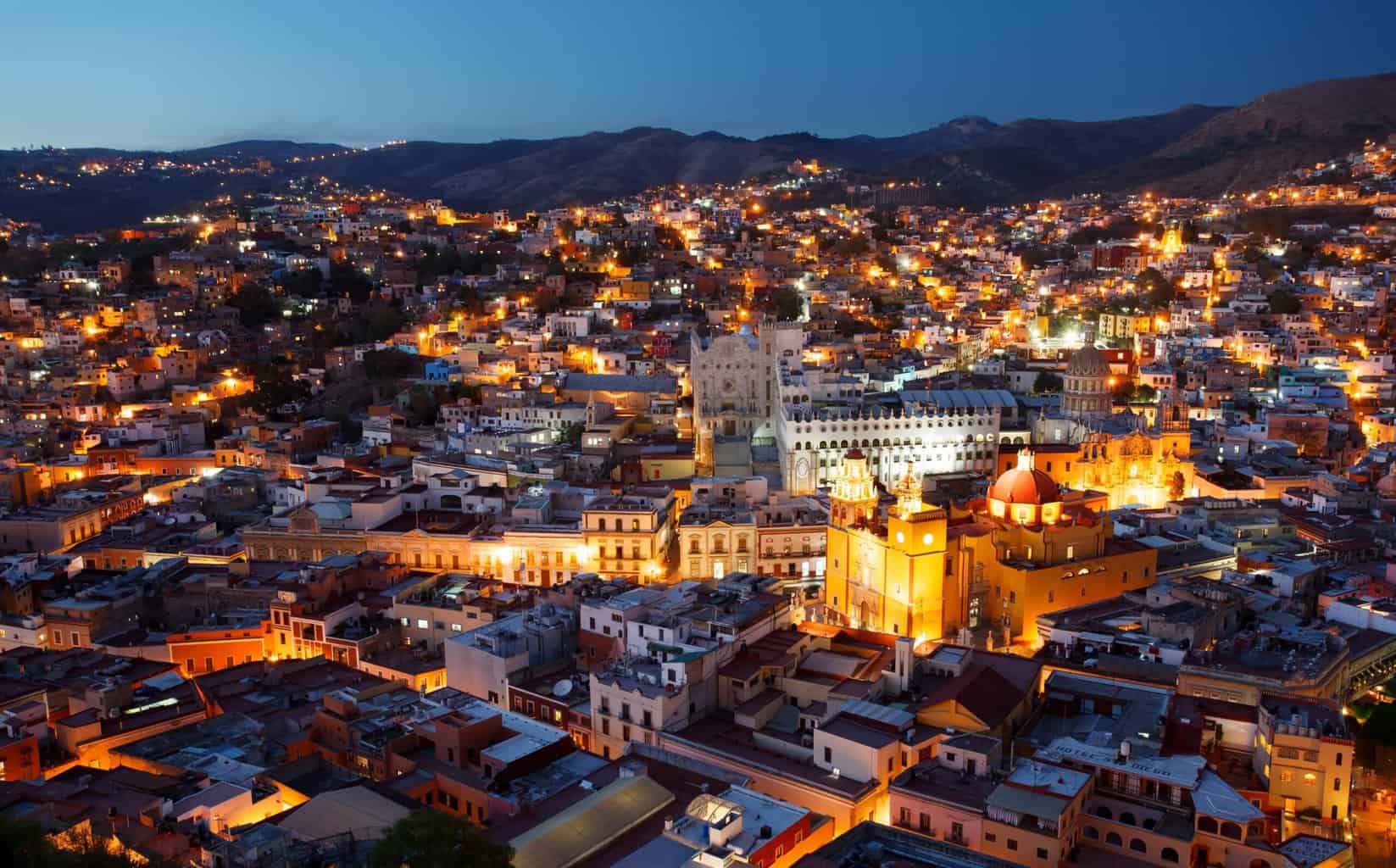
Tucked away in a narrow valley in Central Mexico lies the gorgeous colonial city of Guanajuato. The town was founded in 1554 next to one of the richest silver mining areas of Mexico. The 16th-century mining boom led to the development of lovely haciendas and fine colonial mansions, many of which are made out of pink and green sandstone.
Guanajuato streets and colourful alleyways are detached in every direction, while most of its traffic is served by a network of underground tunnels, making it an excellent city for pedestrians.
8. Copper Canyon
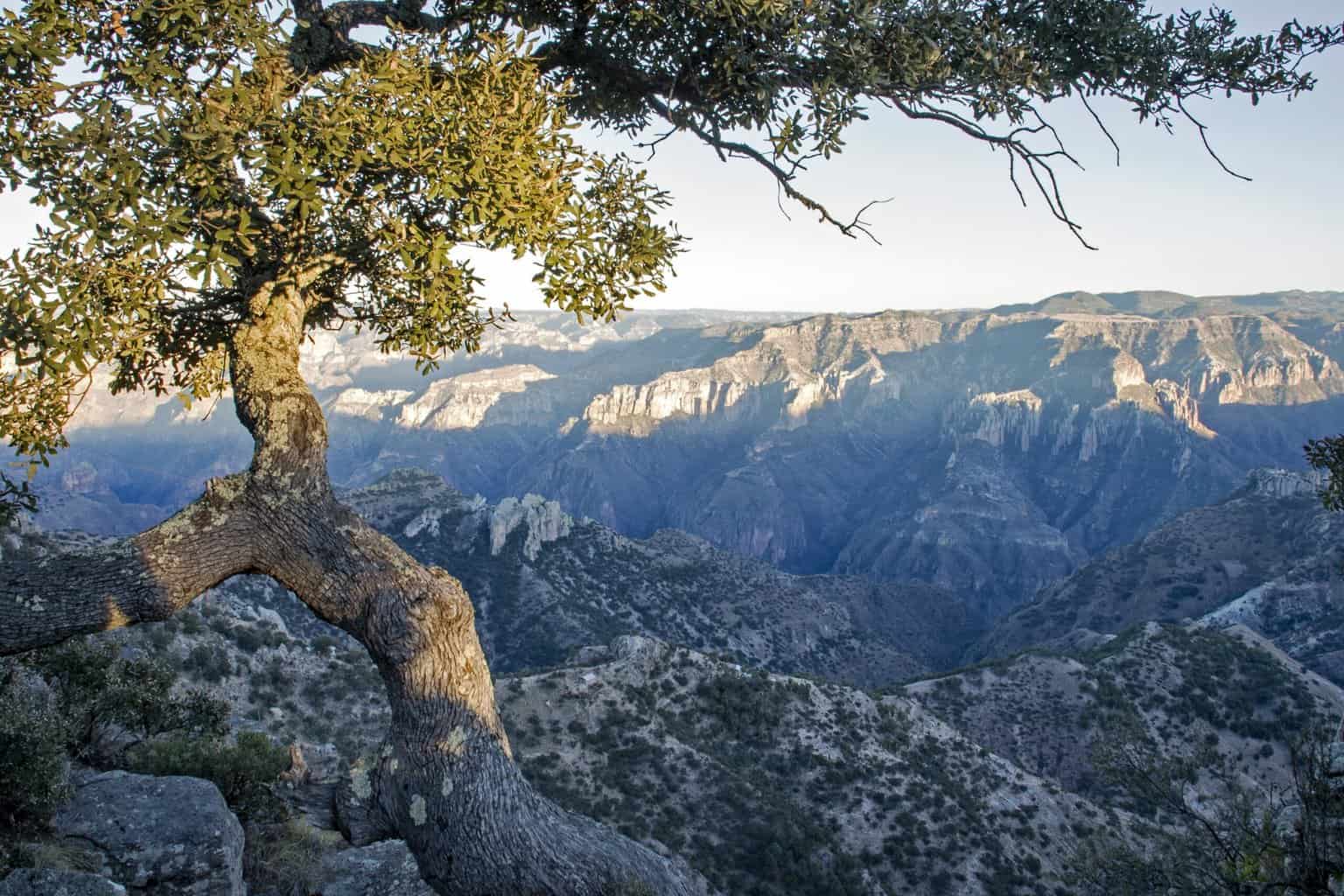
Named after the copper-green colour of the canyon walls, the Copper Canyon may well be a network of six canyons, which together are several times larger than the Grand Canyon. Located within the Sierra Madre, this canyon system offers a variety of the most extraordinary scenery in Mexico.
There are some ways to explore Copper Canyon, but the foremost outstanding way is by the Chihuahua-Pacific Railway. The track passes over 37 bridges and through 86 tunnels, rising as high as 8,000 feet above water level, featuring various of the Canyon’s most spectacular scenery.
9. Cancun
A world-famous tourist destination on the Caribbean coast of the Yucatan, Cancun offers a complete vacation package of fabulous beaches, a first-class hotel zone, Mayan ruins, and exuberant nightlife. Its year-round perfect weather and beautiful beaches are the city’s top tourist magnet.
With 14 miles of powdery white sand bordering turquoise waters, these beaches offer an honest range of outdoor activities. The downtown area, called El Centro, beats to a more authentic Mexican tune with its historic architecture, cheap eating options, and salsa clubs.
10. San Miguel de Allende
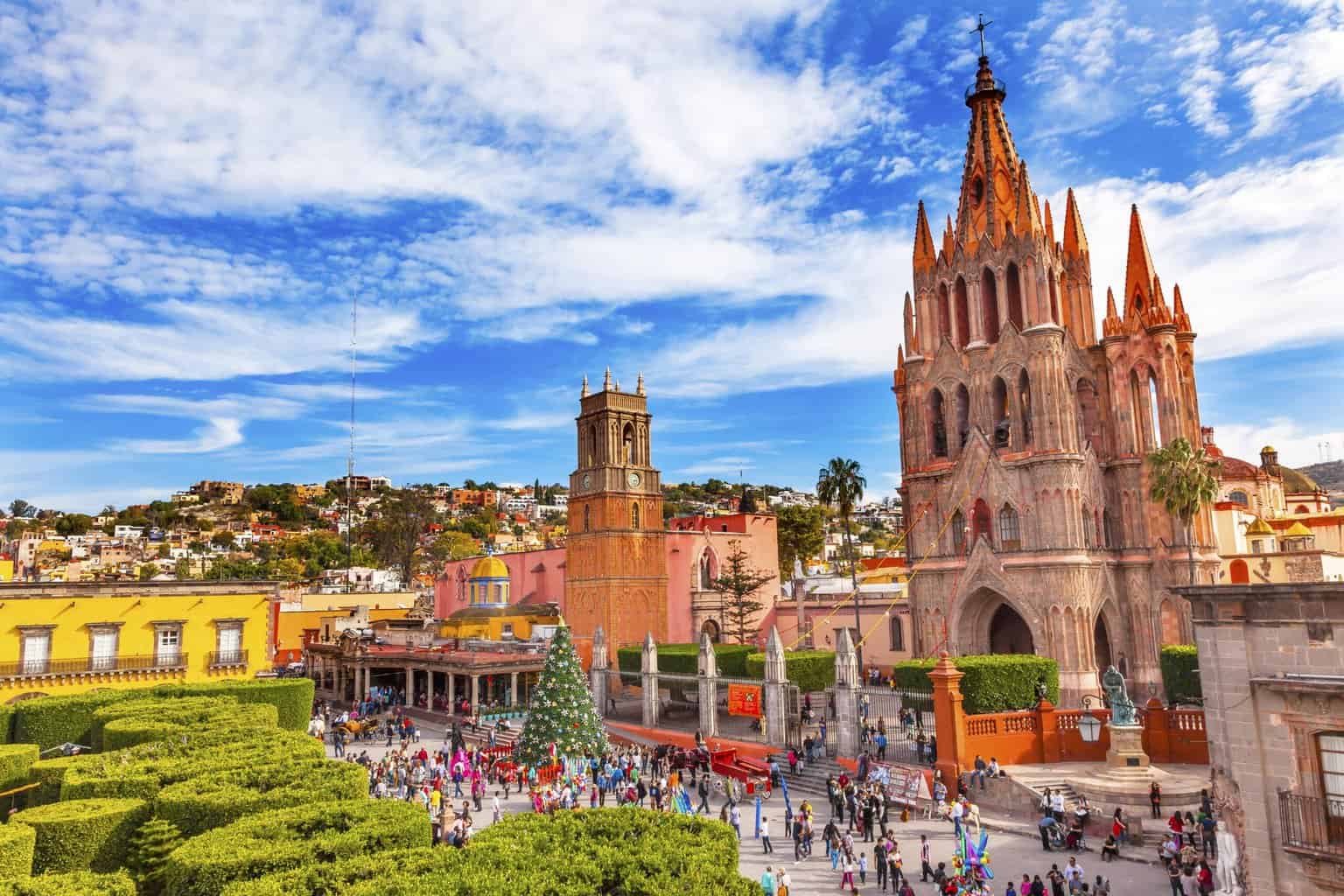
Of all the foremost popular destinations in Mexico, San Miguel de Allende might be a picturesque and charming city in Mexico, probably magical to wander around. It is beautifully located on a steep hillside, looking over Rio Laja.
This city’s cobbled streets and pleasant colonial architecture make it a treat to behold. Although there are no major attractions, simply being here might be a treat. Whether dining in the nice restaurants, perusing the galleries, or visiting the nearby hot springs, this city won’t disappoint.
Mexico travel statistics reveal a vibrant journey through numbers—a testament to its enduring appeal and economic vitality. Whether you’re exploring ancient ruins, savouring street tacos, or lounging on pristine beaches, Mexico invites you to embark on an unforgettable adventure!






